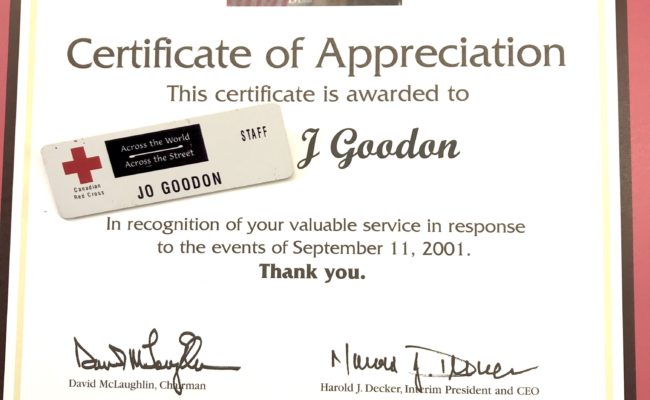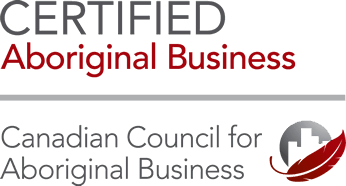Tell me a story
Working as a press secretary and political hack in the fast-paced world of politics had been an exciting start to my career, but after a few years I was ready to move on to something new, something with more meaning. A brief sojourn led me to California where I would take my Masters in Communication before heading back into the workforce.
Shortly into my job search, I learned of an opening in the public affairs department with the Canadian Red Cross in Calgary. I knew this was the place for me — it would allow me to combine the skills I had been honing with an organization that had purpose, one that worked in some of the toughest places on the globe.
After joining the Red Cross in 1999, I was given interesting assignments ranging from local media spokesperson to working in a national capacity in the Ottawa office where, among other tasks, I interviewed international aid delegates who were either preparing to leave or returning home from life-changing missions. Their stories were the most fascinating to me. This was what I wanted to do — work with the Red Cross abroad.
After learning more about the process to work outside our border, I realized it wouldn’t be as easy as initially imagined. So I took the requisite steps and signed up for mission readiness camp where vetted new aid workers learned the realities and challenges of working in disaster and conflict zones in a hands-on environment.
After my stint in Ottawa, I returned to Calgary and continued to work in my role, always with an eye on the international scene.
And then September 11th happened.
We all remember where we were, what we were doing, who we were with.
I was in my office, with my small T.V. tuned into the news, sitting stunned as I watched the events unfolding live on air. Could this really be happening?
The rest, as they say, is history. Within minutes, the Red Cross machine was in full swing. Phones rang off the hook with reporters looking for constant interviews and the public wanting to do something–anything. Our team spent the next frantic days answering calls, getting briefed, responding to interviews, attending meetings and fundraising events throughout the city.
The call went out looking for trained Canadian Red Cross workers to go to New York to assist our American Red Cross (ARC) counterparts. I wanted on that list. Yet again, I realized it wouldn’t be as simple as submitting my name.
There were no open public affairs postings, even though this would be the biggest breaking media story of our time.
Undeterred, I looked at opportunities that were open. Thousands of volunteers were streaming in to offer their help in NYC. All of these volunteers needed to be carefully screened and placed in the appropriate position — this was where positions were open and help was needed.
And that is how I came to work as a Red Cross delegate in New York after the 9/11 terror attacks. After a few days processing volunteers (an astounding 6,000 would eventually come through the doors), I connected with the public affairs department and spent the next few weeks in one of the most meaningful roles of my professional life.
Now, this never would have happened had I stopped at “no openings at this time.”
Let’s step back and say that the focus of this post is about how to remain productive at work when you feel like giving up. I could have introduced the topic in a number of ways — state a commonality, ask a question, create some mystery to name a few methods. Or I could lead with a story. In case you are wondering (rightly), this post is about the value of incorporating storytelling into your communication strategy.
Want to be memorable? Tell a story that connects.
“As leaders and business owners, our goal is to persuade and influence others — employees, customers, partners and other stakeholders — to join us in our vision for the future, to change behaviour, to do business with us and so on,” says corporate storyteller and communications consultant Denise Summers of Amphora Communications. “Corporate storytelling builds a connection with our audiences and amplifies that connection in a way reason and analysis have difficulty achieving on their own.”
“The use of storytelling in business doesn’t replace analytical thinking, but complements it,” says Summers. “The intelligent and skillful sharing of stories connects us as human beings, strengthens our communications and stimulates change and innovation. We’re wired to remember stories; since ancient times, it’s how we learned, made sense of the the world and built relationships.”
“Compare a PowerPoint presentation or other communication tool filled with bullet point after bullet point of facts and stats with a well told and compelling story. Few will be able to remember much of the data five minutes later. Many will be able to recount the story and will be inspired by it. In some instances, a story will have a profound impact and change lives. For most of us, data is just not that galvanizing.”
Persuade with emotion
In the Harvard Business Review’s Storytelling That Moves People, Robert McKee, the world’s best-known and most respected screenwriting lecturer, gives insight on the impact of storytelling for business.
“A big part of a CEO’s job is to motivate people to reach certain goals,” says McKee. “To do that, he or she must engage their emotions, and the key to their hearts is story. There are two ways to persuade people. The first is by using conventional rhetoric, which is what most executives are trained in. It’s an intellectual process, and in the business world it usually consists of a PowerPoint slide presentation in which you say, ‘Here is our company’s biggest challenge, and here is what we need to do to prosper.’ And you build your case by giving statistics and facts and quotes from authorities. But there are two problems with rhetoric. First, the people you’re talking to have their own set of authorities, statistics, and experiences. While you’re trying to persuade them, they are arguing with you in their heads. Second, if you do succeed in persuading them, you’ve done so only on an intellectual basis. That’s not good enough, because people are not inspired to act by reason alone.”
“The other way to persuade people — and ultimately a much more powerful way — is by uniting an idea with an emotion. The best way to do that is by telling a compelling story. In a story, you not only weave a lot of information into the telling but you also arouse your listener’s emotions and energy. Persuading without a story is hard. Any intelligent person can sit down and make lists. It takes rationality but little creativity to design an argument using conventional rhetoric. But it demands vivid insight and storytelling skill to present an idea that packs enough emotional power to be memorable. If you can harness imagination and the principles of a well-told story, then you get people rising to their feet amid thunderous applause instead of yawning and ignoring you.”
It’s easier for most of us to connect stories with a point versus sort through naked facts, and hopefully come to the conclusion you are targeting. The next time you’re trying to persuade an audience, consider adding in a good story to really make a connection.


